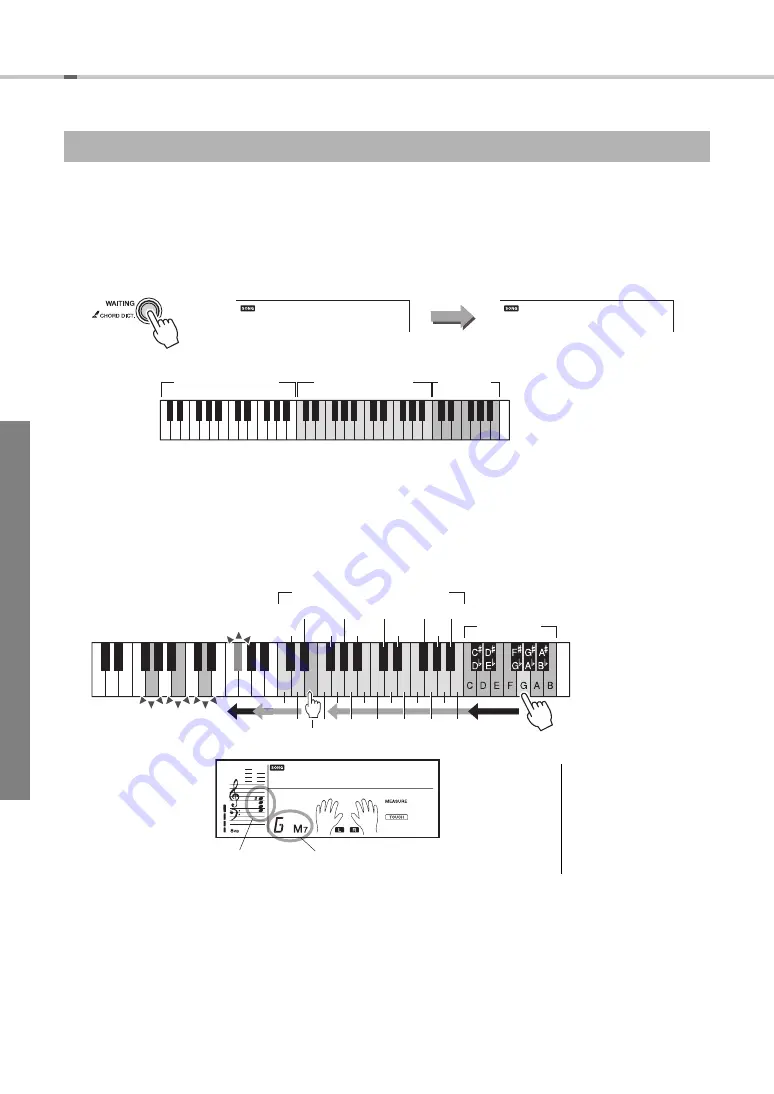
Playing Chords for Style Playback
EZ-220 Owner’s Manual
38
The built-in “Chord Dictionary” shows you the individual notes of chords. This is ideal when you know the name
of a certain chord but do not know how to play it.
1
Hold down the [WAITING] button for longer than a second.
“DICTIONARY” followed by “Dict.” will appear in the display, then the key-
board will be divided into three ranges as illustrated below.
2
As an example, try learning how to play a GM7 (G major seventh)
chord.
Press “G” in the Keys for Root Dictionary section, then “M7” in the Keys for
Chord Type Dictionary section to turn on the key lamps which you should play.
On the display, the notes you should play for the specified Chord Type and Root
are shown as notation.
3
Try playing a chord in the Auto Accompaniment range of the key-
board, checking the indications in the display.
When you’ve played the chord properly, a bell sound signals your success and
the chord name in the display flashes.
To call up possible inversions of the chord, press the [+]/[-] buttons.
4
To exit from the Chord Dictionary display, press the [SONG] or
[STYLE] button.
Looking up Chords Using the Chord Dictionary
DICTIONA
Dict.
Hold for longer
than a second.
Keys for chord type
dictionary
Keys for
root dic-
tionary
Keys which you
should play will light
Dict.
−05
s
u
s4
dim
7(13)
6
(9)
m
m7 7(
b
9)
a
u
g
M
M7
7
7(
#
9) 7(
#
11)
m6
m(9) m7
b
5
mM7
7(
b
13)
7(9)
7a
u
g
dim7 7s
u
s4
m7(9)
Notation of chord
Keys for GM7
chord
Chord name (root and type)
Keys for chord type dictionary
Keys for root
dictionary
Major Chords
• Major chords are usually
indicated by the root name
only. For example, the indi-
cation “C” in a score refers
to a “C Major” chord. To look
up the fingering for a major
chord press the root key and
then the M chord type key.






























